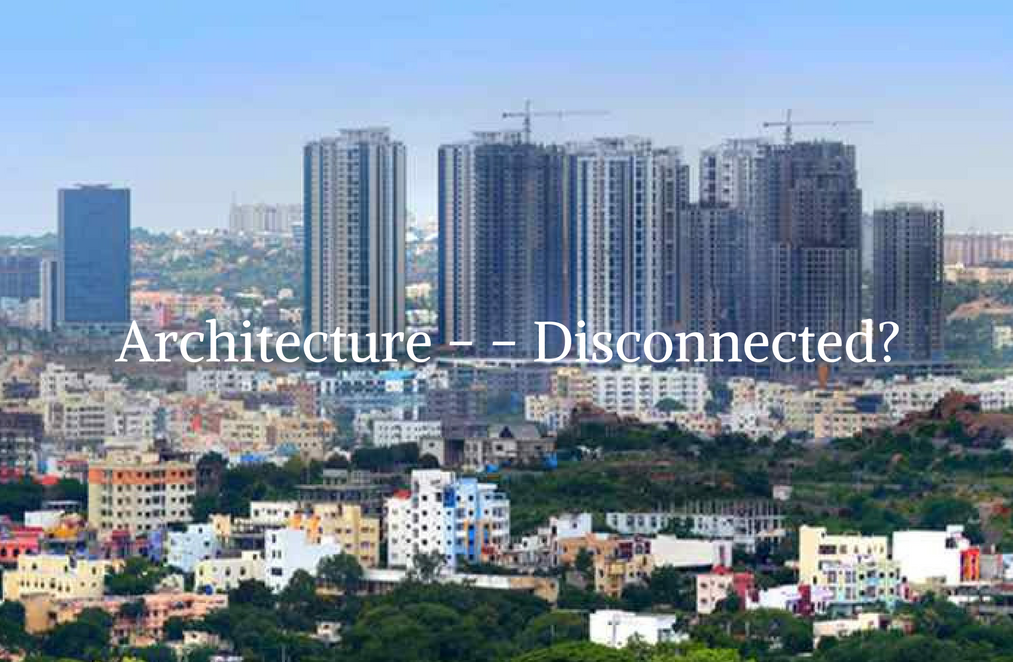Though architecture exists all around us, architecture of value (not economical) is disconnected from the people mainly because of its inaccessibility. People are deprived of access to experience good architecture and appreciate it and hence, especially in India; we are used to seeing people simply ‘make do’ with whatever is within reach. Architecture has thus become a mere mirage put forth by malls and high rise buildings, or worse by interior design.
While it appears that good architecture and architects cater to and are accessible only to the economically elite, it is also obvious that they are professionals just like engineers and doctors and are available at a cost. We cannot expect architects to work for free. The harsh truth is, only if the demand and appreciation for architects’ reaches grass root levels can architecture serve all, however, our profession unfortunately is not the Facebook or Google of today without which one cannot do, or at least we believe so.
The question remains, is architecture ‘connected’ to the common masses? Unfortunately, not yet. However one can imagine bridging the gap through layers of penetration within the systems of the education, political realm, professions, cultural thought and way of living. It would require the architectural fraternity to be coherent with the local authorities, collaborating with developers, infrastructure builders and city planners.
Architecture is disconnected, also, within the profession. This disconnect is a wider issue of discussion for we, within a fraternity have not come to terms with the innumerable styles with which our cities are shaped. We see each architect posing his ‘style’ of design, neglecting contexts which actually demand something completely different. Such individualistic approaches hamper the cause of architecture. It is this reason why our cities see the application of the ‘disney’ effect where the colour of the window or the compound wall defines boundaries of various measures. How will architecture connect to the masses when buildings are divided by these metaphysical boundaries?
In this age, when the idea of criticism holds much importance in the field of architecture; it is largely neglected due to the egos and shyness of acceptance attached to it. Bold criticism requires bold architects who are open-minded and in fact welcoming to such commentary. It is important for architects to accept and give comments on each other’s works to form a mutually appreciable community of combined learning, the process we have long left to the days of architectural school.
It is out of this process can a culture emerge which can eliminate the disconnect within our profession and from there on grow to connect to the masses.
 Meghna Mehta is an architect and Sub-Editor of Indian Architect and Builder (IA&B) magazine. She completed her post graduation in History, Theory and Criticism from CEPT University, Ahmedabad, India.After having learnt from eminent architects like B.V.Doshi and Kulbhushan Jain, she took up journalism to pursue her interests in research, theory and manifestations.
Meghna Mehta is an architect and Sub-Editor of Indian Architect and Builder (IA&B) magazine. She completed her post graduation in History, Theory and Criticism from CEPT University, Ahmedabad, India.After having learnt from eminent architects like B.V.Doshi and Kulbhushan Jain, she took up journalism to pursue her interests in research, theory and manifestations.







